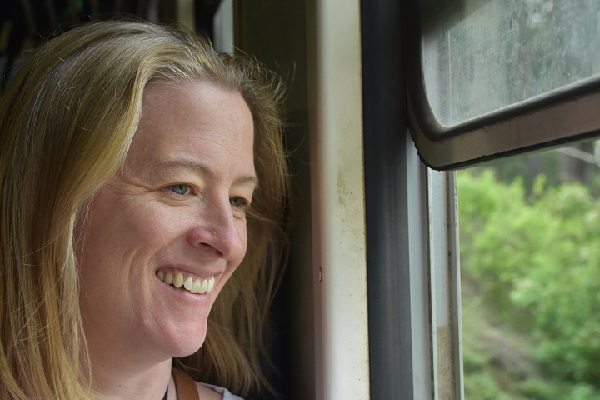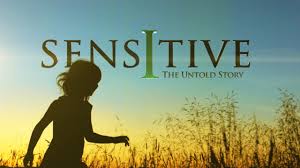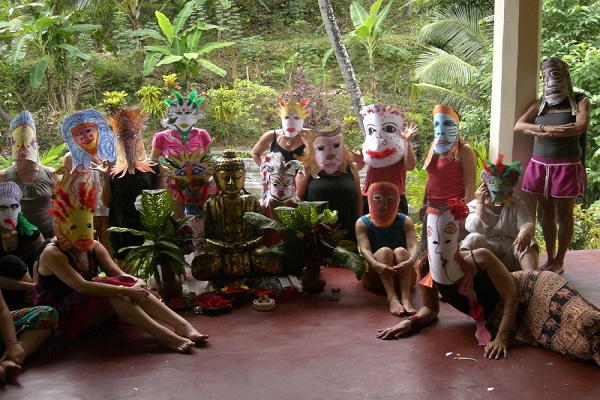The previous post outlined why reflective practice is a leadership super power and surfaced some of the richness that reflection brings. This post explores three of the barriers to creating space and time to reflect and provides you with a structure to get started.
My previous blog post explored why reflective practice is a leadership super power and surfaced some of the benefits and insights that reflection helps us with. In this post I want to explore three of the internal barriers to getting started and provide you with a framework and some great questions to inspire you to do it anyway!
The reality is that reflective practice is something most people, including most leaders, have never done. We live in a society, and certainly in workplaces, in which ‘doing’ and ‘tasks’ are what are valued and creating space to reflect and learn is far from the reality.
Three main barriers to reflective practice
There are three main barriers that get in the way of us creating space and therefore creating the environment to reflect:
- We don’t schedule it/plan for it/turn up for it
- We don’t value it – ‘Why would I bother doing that?’
- We think that what it might show up for us feels too daunting and scary – so it is safer/better not to do it at all
Let’s explore these:
- We don’t schedule it/plan for it/turn up for it
In my earlier ‘Five keys to creating conscious change and restoring wellbeing’ post, I introduced the 5S leadership self-care model. The first S in this model talks about making ‘space’ – carving out space – which means scheduling it into your calendar and creating the conditions to support that schedule (such as finding the best environment for you to be able to bring your full focus to the intended activity: reflection).
Even if you do schedule time for reflective practice, it can be all too easily get ‘bumped’ for something more ‘important’ that appears on your to-do list. The biggest tip I can offer here is schedule it and show up fully for yourself – no excuses. Treat it as you would a meeting with your boss or a client.
2. We don’t value it – ‘Why would I bother doing that?
If we don’t understand the benefits of a new practice, we won’t value it. My hope is that if this is new for you, that some of what has been explored in the previous post will help you to at least feel tempted to give it a go. Perhaps ask around and connect with another leader who you know does use reflective practice and ask them personally about why they do it and how they go about doing it.
3. We think that what it might show up for us feels too daunting and scary – so it is safer/better not to do it at all
In a crazy-busy life, we often have a backlog of things we need to process and make sense of. If this is the case for you, then carving out space can feel quite daunting and even scary. Why?
Because sometimes we keep ourselves so busy because that means we don’t have to look at and face up to what is really happening and true for us. If we don’t look towards this stuff and keep running from it, then we don’t need to have that honest conversation with ourselves or another, and we won’t need to make a choice or decision that may mean change. Right?
This can be a sensible and even worthy strategy in the short term, depending on life circumstances. However, in the medium to longer term it will catch up with us. If we keep ‘shying away’ from what we know is true for us and pretending that everything is okay – if we don’t start to face up to what is really true for us – we can begin to compromise the very core of our being. That doesn’t serve you, the situation or anybody else.
Can you relate to any of the above? What is standing in the way of you reflecting?
Getting started with reflective practice
Here is a framework that might help to get you started:
- Schedule it
- Show up for it
- Structure it
Option 1
- Recall and review: identify a recent situation/event/conversation/feeling/trigger that you want to explore. Capture the key points you recall, replay the conversation in your head and/or begin the process of a written journal.
- What are the key learnings?
- What did you notice?
- What did you say?
- How did you feel?
- What were you most proud of?
- What were you not so proud of?
- What do you now understand about yourself?
- What do you now understand about the situation?
- Set direction with what you now understand about yourself. The situation, the other person, etc. What will you do differently next time? What is your intention and course of action from here?
Option 2
Thinking about the past week or month, ask yourself the following questions:
- What am I most proud of?
- When have I felt triggered by a particular situation or event?
- What made me feel that way?
- What can I observe/learn about myself in this situation?
- What action do I need to take from here (if any?)
Leaders who thrive are those who care enough about themselves and those they lead to do this – to look in their own backyard and do their own self-work.
Still feeling too tough? You don’t have to go it alone. A good way to start might be to get yourself a leadership coach who can ‘hold the space’ for you so you can begin a gentle journey inwards.
I also recommend the host of resources referred to in my ‘Five keys to creating conscious change and restoring wellbeing’ post. Perhaps you simply feel ready to grab a notebook and get started?
To reiterate the closing words in my last post:
One of the greatest leadership/life challenges is knowing who we are and what matters to us at our core AND not letting the busyness of life and a multitude of external distractions pull us away from that.
One thing is guaranteed: unless you deliberately and regularly carve out space to engage in reflective practice and take a balcony perspective, life will pull you off course from your centre – from who you are and what matters to you.
If you do build a reflective practice into your rhythm in life, the conversations might be tougher but the outcomes will also be richer.
The choice is yours. What do you choose?
The previous post involved a personal story that highlighted the shifts that can happen when we make space to reflect. This post builds on that example and explores other benefits of reflection, why the reflective practice is a leadership super power and how to build it as a practice into your own way of being.
Leaders whom I work with in a coaching capacity often comment that during our time together they experience a sense of space and an absence of judgement. They appreciate the chance to slow down and reflect. It’s from this place that clarity and insight become available resulting in better decisions, choices and outcomes.
To be truly conscious, awake and aware of both your inner landscape and the outer terrain of work and life requires a paradigm shift for leaders about the importance of something I believe is a leadership ‘super- power’: reflective practice.
I wish I could find a better term for it than ‘reflective practice’ – I know it sounds more like something that nuns would prescribe as a punishment at boarding school than a leadership super power. (Perhaps you can suggest a better name?)
Nevertheless, it’s the sentiment rather than the name that is important.
Reflective practice needs to become something that happens not just in a formal setting such as coaching. Rather, it needs to extend to become an integrated part of your daily, weekly, monthly and yearly modus operandi as a leader.
What is reflective practice?
Joseph A Raelin, in his article‘”I don’t have time to think” versus the art of reflective practice’,defines reflection as:
‘the practice of periodically stepping back to ponder the meaning of what has recently transpired to ourselves and to others in our immediate environment. It illuminates what the self and others have experienced, providing a basis for future action.’
How does reflective practice help?
As highlighted in the personal story in my previous post, often when we are in the middle of a situation, particularly a stressful one, we cannot maintain the perspective we need to be able to see the situation holistically. It’s only when we create the space and time to reflect that we are able to ‘step off the dance floor’ and get a broader ‘balcony’ perspective of what’s going on. The outcome? Insight, insight, insight. Insight about how you showed up effectively (or not so effectively). A greater capacity to see the perspective of others. The opportunity to identify what ‘triggers’ you and to explore why. The chance to bring light to a problem that may have felt impossible to solve, creating new options and a clear pathway forward.
Why does this matter? Because the consequence of not making time to reflect is quite possibly collateral damage to projects and relationships; damage that is inevitable when we operate completely in action and reaction.
Perhaps you can recall a specific example of where this may have happened to you? Or the opposite: can you think of a time when you did create the time and space to reflect on a challenge and experienced a positive outcome as a result?
What are the benefits?
Some of the benefits of reflective practice are:
- Seeing below the surface to reveal what really is happening. Reflective practice can make the invisible visible. For instance, it can bring to the surface a personal value that might be important to yourself or others and that might explain why a conversation/ outcome/ situation went in a particular direction.
- Restoring wellbeing:
- A simple shift from ‘doing’ constantly to taking space out to ‘be’ helps our nervous system to restore balance (Blog: Mastering thinking and doing AND feeling and being).
- A dose each of compassion and self-compassion will go a long way towards resolving something that doesn’t feel so good so that you can let it move through you (Blog: Are you being a good friend to yourself?)
- Reflective practice opens the opportunity for gratitude. Research has shown that the practice of gratitude has many positive benefits (https://positivepsychologyprogram.com/benefits-gratitude-research-questions/ )
- Connecting the dots. With reflective practice we may begin to see connections between behaviours, actions or situations that previously didn’t appear to be connected. For example, when I learned that one of the personal values of a colleague was ‘control’, I started to understand some of the ways she was behaving in our collaboration. I had previously I felt that her behaviour was out of character and not really serving our partnership. This provided an opportunity to open up the conversation. Connecting the dots can also happen within our own internal landscape. To share a personal example: understanding that the reason I was overprotective of my daughter stemmed from an experience in my past in which I didn’t feel safe.
- Insight, insight, insight. Reflective practice ignites learning about ourselves and the people and world around us. This is essential if we want to live and lead consciously and learn and grow.
- Strengthening connections: with ourselves – what matters to us at our core – and in our relationships with other people.
- Shifting you out of a reactive mindset to allow constructive ‘above the line’ responses. Reflective practice will make you less likely to react and add fuel to what might already be a difficult situation. You are more likely to ‘discharge the heat’ and approach the next conversation in a more open and constructive manner. ( If this concept is new to you – check out this 3 minute u-tube – it’s a concept well worth knowing)
One of the greatest leadership/life challenges is knowing who we are and what matters to us at our core while also not letting the busyness of life and a multitude of external distractions pull us away from that.
One thing is guaranteed: unless you deliberately and regularly carve out space to engage in reflective practice and take a balcony perspective, life will pull you off course from your centre – from who you are and what matters to you.
On the other hand, if you do build reflective practice into the rhythm of your life, the conversations might be tougher but the outcomes will be so much richer.
In my next post, I outline one of the big road blocks that many people experience in getting started with reflection and provide some tips and great questions to get you started.
This post explores compassion and self-compassion through a personal story and invites the reader to reflect on their own levels of self-compassion based in the work of Kristin Neff.
Late last year I had a call from my daughter’s teacher. Chiara (age 15) was midway through a nine-week personal leadership experience based at Snowy River Campus in East Gippsland (provided by the Victorian government’s School for Student Leadership initiative).
The teacher shared with me the wonderful level of commitment, enthusiasm, goal achieving and social contribution that Chiara was making. When I asked her what she saw as the greatest development area for Chiara, she replied without hesitation in two simple words: greater self-compassion.
While this was not a surprise to me to hear someone else – with an opinion that I valued – reflect this back to me, I had a sinking feeling in my heart.
Instantly feeling ‘at fault’ as a mother (as we mothers can do so masterfully), I found myself thinking about the role model that I had been and still was for my daughter. I started wondering why it is often the case that those people who are the most kind and compassionate and loving to others find it hard to provide this same nourishment and nurturing for themselves?
It also got me thinking about the drivers that can contribute to this way of being. There’s the personal focus on external measures of success that are driven by an internal tendency to not feel good enough or worthy enough. These measures often create a false or short-lived sense of success. There are things that society values and that get rewarded in school, in the community and at home – being a ‘good girl’ and looking out for others, for instance. There are those things that take us away from feeling worthy of loving ourselves in the same way that we intrinsically offer love to the people in our lives.
‘Self-compassion is a measurable trait. In 2003 no-one had defined or measured it. In 2017 there were 1340 studies on self-compassion. Self-compassion is strongly linked to wellbeing.’ [ Source: Neff 2018
What is it to be compassionate?
Meet Chiara. Chiara is a gentle, kind and compassionate teenager who is wise beyond her years. She has natural care and concern for all living things – people, pets, trees. She takes great care in rescuing the spider or bug from her bedroom and returning it to the natural environment. She is empathic – she knows how others are feeling. She’s the kid who’ll notice the person in the corner who’s been excluded and approach them to make them feel not alone. She is the granddaughter who asks her nana from a place of genuine interest, ‘How are you Nanna? What’s been happening in your day?’, instead of a typical teenage response of a one-way street and it being all about her. She’s the first to make you a cup of tea if she senses you are out of sorts or need a bit of love.
Chiara is the kid who takes time morning and night to sit on the ground with the dog and give her some real care and attention. Each morning she appears at your side just like a pussy cat and wraps you in a blanket of love to start your day. Yes, we are truly blessed to have her in our lives.
So you see? She is actually one of the most compassionate people I know and such a great teacher to me and to her sisters and peers. Compassion is the essence of this young lady. She knows it well.
Turning this compassion that she knows so well into watering and nourishing herself – that would appear to be the next step in her learning journey. And I know she is not alone. I for one need to turn up this dial on self-compassion. Perhaps you do too?
This might help:
In the later part of 2018, I attended a workshop with Kristin Neff, a world expert on self-compassion. Part of what she offered was a radical shift to ‘relate to self’ in new ways.
Kristen defines self-compassion as:
- being a good friend to yourself
- treating yourself the way you would treat a good friend; and
- holding pain with love.
She took us through a three-part reflective process, which I would like to offer you here:
Part 1
Allow a friend to arise in your mind’s eye. Allow a close friend who is suffering in some way to appear in your mind’s eye, in a situation where you are feeling resilient and strong.
Close your eyes and ask yourself this question: How would I treat this close friend?
What are the types of things you would say to your friend?
What tone do you use?
What’s your body posture like?
What type of non-verbal gestures do you use?
Part 2
Allow to arise in your mind’s eye a situation where you failed at something important to you or you are having a hard time.
What do you say to yourself when you are struggling?
How did you say it?
What is your body posture?
How do you relate to yourself when you are struggling?
Part 3
Do you notice any patterns of difference between how you treat yourself when struggling and how you treat others when they are?
What did you discover about how you treat yourself/others?
Perhaps you might like to share your reflection with a friend?
In our work with leaders – amidst the harsh demands of work and life, the absence of self-compassion is palpable. In our quest to be better, do better, earn more, get the promotion, any notion of self-compassion gets lost.
I invite you to explore the wonderful books and resources that are available on Kristin’s website.
Is there one small step you can take toward greater self-compassion?
PS. Chiara is now several months back from her life-changing leadership experience. The young lady we have here with us now is more confident, self-empowered and self-aware than I thought was possible in such a short space of time. She’s made decisions and choices this year to show more self-compassion and of her own accord has continued a daily journaling practice. She’s followed her inner-knowing and desire to do things that bring her joy (she practices yoga several times a week, walks the dog regularly and is playing netball for the first time). She is also a daily reminder to me that I have a choice.
Date: Wed 29th May 2019 4pm-6.30pm
Location: Melbourne CBD
Investment: $50 ex GST
Facilitator: Nicola Vague
Included is a screening of Sensitive The Untold Story based on the groundbreaking work of Elaine Aron and a space for HSP leaders to come together to reflect and connect and own a little more of your enormous gift.
We look forward to welcoming you to the Evolving Leaders – HSP community.
You can read more about HSP’s and our work with HSP’s by visiting:
This post explores a holistic approach taken in my coaching of a senior leader. Our aim was to help get her out of her head and into her body, accessing and stepping into more of who she was at her core. This would provide the power, confidence and presence to deliver a significant career milestone presentation. It offers the reader resources and an approach to inspire a sharpening of your own presentation skills.
I recently worked with an executive in the latter part of her career. She was naturally introverted and had little experience in formal presentations. However, she had been charged with the responsibility of delivering a significant presentation to an internal audience, part of the launch of an exciting new chapter in the business. She felt little connection to the topic and, to make the situation a little more challenging, the parent company had provided the presentation they wanted delivered. Worse still, the presentation had been translated (poorly) from another language.
The situation triggered a fear reaction in the leader driven by a low level of belief in herself. This was exacerbated by it being a new experience and the fact that, being introverted, she quite naturally felt very visible and exposed. On the plus side the leader did something that many shy away from – she recognised that she needed help and she took personal responsibility to hire a coach to help. These are the leaders I love to support.
“While many of us might fear public speaking even just at a work morning tea, stepping up to the job can make or break your career, especially for those at the top”
Dr Lucinda Holdforth on the ABC Radio National program This Working Life.
I have done my share of presenting over the years, but to be completely transparent I had never formally coached someone else in presentation skills. So, it was time to get to work!
I reflected on the number of presentations that I had sat through feeling totally bored, with speakers who were disconnected from their message and themselves. I knew that to effectively deliver a presentation requires the development of some specific communication and presentation skills such as tone, timbre, presence and connecting with audience. I also knew that to focus on skill and capability alone was not going to deliver results.
I came across a great resource that also informed my approach:
Top Five Tips for Presenting with Impact by Dr Barry O’Sullivan
So, with an eager student at the helm, I designed a coaching program based on what I had read and what I know best: starting close in – helping this leader to deepen /reconnect with who she was and what mattered to her:
Step 1: Start close in
In this context this meant helping the leader to connect to who she is and what matters to her to enable a connection between message and person. Prior to the first coaching session this leader completed a Personal Values Assessment and Core Motivation exercise (“I go to work each day at … so that I can…”) connecting her with her deeper inner motivation: what makes her get out of bed each day to come to work. She also did some reflection around these key questions:
- What is important personally in your life?
- How do you want to ‘show up’ as a leader?
- What patterns of thinking and beliefs are getting in the way of this?
- What needs to shift so that you can feel empowered and confident as a speaker?
Step 2: Understand your audience
Often inexperienced presenters become so consumed with navigating their own fear about the presentation that they lose sight of why they are doing the presentation and who they are doing it for.
This requires a deliberate mindset shift that can feel a bit disorienting, but at the same time it can be screamingly obvious as it was for this client:
- What if it (the presentation) is not about you?
- Consider:
- How can you be of service to this audience?
- How do you want the audience to feel?
- What does the audience need from you?
- What do you need to do/what needs to change for you to get out of the way of yourself?
Step 3: Change your body, change your mind
Of great relevance for this client was the work of social psychologist Amy Cuddy on body language. Given the client was quiet by nature and didn’t easily or naturally command attention and respect when she walked into a room, and nor did she feel confident and empowered when she stood before a group, we focussed on this wisdom from Amy Cuddy:
Our bodies change our minds
Our minds change our behaviour
Our behaviour changes our outcomes
Body language affects how others see us, but it may also change how we see ourselves. Amy Cuddy argues that ‘power posing’ – standing in a posture of confidence, even when we don’t feel confident – can boost feelings of confidence and might have an impact on our chances for success.
Here is what Cuddy says:
- When you pretend to be powerful, you are more likely to actually feel powerful
- Power posing or high power poses versus low power poses – are you collapsing or taking up space?
- Do you feel like you are supposed to be here (‘imposter syndrome’)?
- You can choose to be assertive, confident and powerful
- Configure your brain to cope the best in that situation
Source: Your body language shapes who you are, Amy Cuddy
Well can I just say – in case you had any doubts – that it really works.
When you pretend to be powerful, you are more likely to actually feel powerful.
Why don’t you try it on?
It was through this inspiration, and practice that my client shifted from being closed down and reserved to having an open heart, feet on the ground, back tall and the presence that demanded attention and an excited anticipation from the audience about what she was about to say.
Step 4: Communication and presentation skills development
In terms of building the presentation skill development component of my program, I drew upon the following great ideas from Julian Treasure:
How to speak so people want to listen, Julian Treasure
There are three main parts to Julian’s work that all informed the coaching approach:
- “Amazing
Toolbox”
- Register – head, throat, chest voice – “we associate depth with power”
- Timbre – rich warm smooth
- Prosody – avoid monotony
- Silence – find opportunities to rest in silence
- Pitch – vary the pitch
- Volume – vary the volume
- HAIL – honesty/authenticity/integrity/love
- Vocal warm ups.
(You can access this content via the TED talks link above)
Step 5: Mindfulness to quieten the ‘monkey mind’
When the stakes are high and we are well out of our comfort zone there seems to be this natural increase in mental chatter – like the radio gets turned up to 10! This was the case for this leader and so through the four-week program and on the morning of the presentation, she used a meditation practice to quieten down this mental chatter.
Step 6: Practice, practice, practice
Nothing great is ever achieved without practice. This client was completely motivated and disciplined and these were key ingredients to her ultimate success. During the month-long preparation, the leader videoed herself presenting on a weekly basis, watching it back and reflecting on what had improved and areas for next focus. From my perspective, one of the big things I needed to do was to help her ‘take the jump’ from speaker notes on PowerPoint to cards to that final leap of faith that she didn’t need any prompts to finally getting out there and doing a great job.
The big day finally arrived. The message I received immediately after the presentation said: “I nailed it”. Job done. This leader was a true inspiration and a joy to coach.
It is a well-known phenomenon that we teach what we need to learn. After initially hesitating to accept this assignment, I am grateful that I said yes because as it turns out the coaching and support that I was able to give this leader was just what was needed, and ironically, as I step more into presenting and speaking myself, it was also perhaps the perfect medicine for me.
Interested in presenting with greater impact? I would love to help.
In my previous post, I explored the seven circles and invited you to consider who is in your first circle and whether it is time for an overhaul. In this post, I want to share with you my personal experience of finding my tribe and offer some tips for finding your own tribe.
In 2012 on the far side of Bali, without a single traffic light or ATM, I arrived in a place called Tejakula and both a mountain retreat and beachside delight for every part of my senses. I had made a decision to take time away from my family and to travel alone – my first time for both – to attend a week-long art therapy conference with 24 others.
I settled into my accommodation on the beach along with four other women. Apart from two sisters, none of us knew each other. From there we travelled via motor bike to the main road and then up to the top of the mountain in a ute where the retreat was being held. This was to be our twice daily ritual: from the ocean to the mountain, from the mountain to the ocean. The five of us instantly found an incredible bond, soon feeling like friends who had known each other for years.
On the morning of the first session, I felt emotion rising as we approached the mountain top destination. I found myself in an open-air studio in this healing oasis sitting next to the bronze statue of Buddha. Tears of sadness and joy ran down my face.
In that moment and for the rich days that followed I was struck by the realisation that I was here amongst my tribe. I had never known such a feeling of belonging. In fact the whole idea of ‘tribe’ was something I had never even thought about. The fact that I didn’t have a tribe or that I needed to find a tribe had never occurred to me. There I was with a group of 25 strangers feeling more at home, and more seen and validated, than I had ever known.
Amongst this experience of pure sensory delight, experiencing the local rituals and art process, something within me was awakened. This was one of those times in life where I turned a little more towards who I am at the core.
I am so grateful I backed myself enough to take that trip.
This experience quickly set a fire in me, leaving me with a very clear intention before I left Bali: to find my tribe at home that worked in the same professional arena as me – the leadership development space.
I didn’t have to wait too long. Within a week of returning home, I met two of my now closest friends and confidantes via an introduction from a mutual friend. They are very much tribe and we are that for each other.
Over subsequent years I have been very fortunate that this tribe has grown. In terms of the seven circles, that has meant that many of my older friendships, based on outdated versions of me, moved out a circle or two while remaining important in my life.
Having a tribe, my tribe, has helped me learn to express, to connect deeply and to be present for another. In those inevitable hours and days and weeks when I feel overwhelmed (as a highly sensitive person often does – it is a shadow of this trait) or I’ve lost my way, its my tribe that help me remember who I am. Through being able to express and share even the most intimate or terrifying thoughts and feelings, I have been able to heal, to grow and to become a more useful version of me.
I share this story in the hope that it might make a difference to one person, in the choices they make and intentions they set around the people they include in their first circle.
I recognise that having a tribe is not something that everyone yearns for, and if you feel your needs are well met in the first circle just as they are, then that is of course perfectly fine for you (and I hope you have enjoyed reading this little travel blog)
If you do however have an inner yearning to grow or start your tribe, here are some tips that might be useful for you:
- There is a tribe out there for every single one of us but it’s not likely to come and tap you on the shoulder! So set your intention and take action towards finding your tribe.
- Consider people in your life who you think you might like to ‘test’ inviting into the first circle and create opportunities where you can be on your own with this person and ‘put a bit of skin in the game’. This means offering up something personal (a little bit edgy, but not so much that it will make you feel too vulnerable) that you wouldn’t usually share with this person and see where the conversation goes. It’s a bit like putting your foot in the water to test the temperature.
- Sometimes we have to ‘look outside’ our current friends, family and social networks to find our tribe. At least that was my experience – it may not be yours. The best way of doing this is to put yourself into new situations doing something that you love to do (maybe an art class, a wine club, a personal development experience, etc).
- Become a better version of your own tribe – seek out opportunities to learn and grow and develop and reflect and express and write. You could use our to set you on your way with this. This is about becoming a better friend for yourself.
- Perhaps you are a highly sensitive person like me? If you think you might be but you’re not sure, take the HSP test and if that leans you towards a yes or a strong yes, please send me an email. We have a number of ‘HSP in Business’ specific events in Melbourne where you can seek out and connect with other HSPs.
And finally, a closing note of acknowledgement for my tribe:
To my tribe. You know exactly who you are. This is for you.
Thank you from the core of my being for teaching me how:
To be present, by being present,
To listen deeply, by listening deeply,
Not to judge, by never judging,
Not to blame, by never blaming,
To welcome all of our human gifts and imperfections, by welcoming all of my human gifts and imperfections,
To lovingly hold the space for another, by lovingly holding the space for me.
You are the wind beneath my wings, and the light that shines so brightly even in the darkest moments.
I am so deeply grateful that we found each other, and I feel so blessed to be walking this path with you.
With deep gratitude, Nicola x
This post is about an idea called ‘The Circles’ from a little book by the same name. It invites the reader to reflect on the people they place in their first circle and to make a conscious choice about whether that’s working well or might need a some change.
I stumbled across a little book collecting dust on my daughter’s bookshelf. It’s called The Circles and was written by well-known Australian actor Kerry Armstrong. The purpose of the book is to help the reader to take a helicopter view of their feelings towards friends, family and colleagues and to map them to one of seven concentric circles.
I’ve found the book helpful as a ‘check in’ for myself, and I thought it may be useful for you too – particularly as we enter a time of the year when, hopefully, most of us will find some time for reflection.
Each of the seven circles in the book represents where people are in your life and your relationships to them. The first circle is for those people who make you feel good about yourself, while the seventh circle is for the people you find most challenging. The author is quick to mention that who you place in each circle is entirely up to you, and that it’s important for you to know that this will change – and that you can choose to make changes at any time.
In this post I want to focus on the first circle.
The author explains that the first circle, the one right in the middle, is where you get to express all your hopes, dreams and thoughts. She invites you to put yourself in the centre of that circle and ask yourself:
Who knows me here?
Who can I trust with my life, my thoughts, my dreams?
Who makes me feel free to be myself?
In other words, who would you have inside that first circle with you?
Perhaps you might like to take a moment to do that for yourself? What do you notice?
The Circles got me thinking about and truly appreciating the people who are in my first circle. It also got me reflecting back to a time in my life when I didn’t even know that was missing. It took me many years to find my tribe and it was a surprising lesson to learn that, in the main, my tribe is not my family. (This is something I will share with you in a future post.)
The book also got me thinking about how supportive and enabling it is to have people in my first circle, how these people have helped me (and continue to help me) navigate the complexities of life situations and depths of emotion that I regularly experience (exacerbated by being a highly sensitive person, or HSP).
Just knowing that I can share absolutely anything with someone in my first circle without being judged; that I can pick up the phone to one of them at any time and have a much-needed rant or cry or laugh or celebration and will always be meet with unconditional love. This is such a liberating feeling. Not surprisingly, this type of arrangement is often reciprocated, especially with my first circle friends. (It has taken years of getting to know myself better to be able to begin to cultivate this.)
I haven’t written this post as a ‘you must be like me and have someone in the first circle’ rant. It is important to acknowledge that some people, for a variety of reasons, prefer to stand in the first circle alone, and that may well be exactly what works for them. We are all different so as long as we are choosing consciously what works for us and making changes when things don’t work for us, the rest is irrelevant.
However, for me having company inside that circle does matter. Any here’s why:
As human beings, we are designed to ‘feel’. Part of managing ‘feeling’ is having someone with whom you are completely comfortable and safe expressing how it is that you are feeling. Someone who won’t judge you or blame you, who won’t try to fix you and who is available to listen deeply to you. That’s how we move through strong emotions and in doing so learn about ourselves and the world around us: by expressing them.
For those who are happy alone inside the first circle, they may find that expressing their feelings somewhere – through journaling or creative expression of some kind, for instance – is enough. But for me and many others, it needs to be another person.
However you do it, it is important that we regularly express how we are feeling in some way. If we start to hold onto all of our worries, literally inside our bodies, this affects our physical, mental and emotional wellbeing. We can get sick, lose sleep, worry unnecessarily. If we have a predisposition towards mental illness, the inability to express feelings can be a trigger for that too.
I encourage you to take the opportunity to ponder and consider: Who is in your first circle and is that working well for you? Or is there an opportunity for an overhaul?
In my next post I will share some tips for attracting the tribe that is perfect for you.










